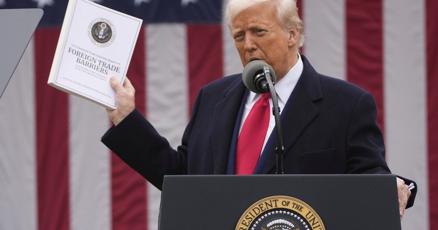The economic chess match between Canada and the United States intensified yesterday as Ottawa unveiled its comprehensive counter-tariff strategy, targeting $2.5 billion in American imports. This bold move comes in direct response to President Biden’s recent decision to impose steep tariffs on Canadian aluminum and steel products, marking a significant escalation in trade tensions between the historically close allies.
“This is not a path we wanted to take, but we will always stand up for Canadian workers and industries,” stated Deputy Prime Minister Chrystia Freeland during yesterday’s press conference. “For every action that unfairly targets Canadian businesses, there will be a proportionate reaction.”
The counter-tariffs, set to take effect July 1, strategically target American steel and aluminum products—mirroring the US approach—but also expand to include agricultural goods, household items, and boats. Canadian officials have carefully selected products manufactured in politically sensitive states, particularly those crucial to the upcoming U.S. election.
Industry analysts note the remarkable precision of Canada’s response. “The Canadian government has clearly learned from previous trade disputes,” explains Dr. Helena Moreau, trade economist at the University of British Columbia. “They’ve targeted goods that will cause economic pain while minimizing disruption to Canadian supply chains and consumers.”
For Canadian businesses that rely on American imports, the immediate future presents significant challenges. The CO24 Business sector analysis indicates that companies are already scrambling to secure alternative supply sources from non-US markets, with European and Asian suppliers reporting increased inquiries from Canadian purchasers.
The Canadian Chamber of Commerce estimates these counter-tariffs could increase costs for certain manufacturers by 10-15%, potentially leading to higher consumer prices across multiple sectors. However, government officials maintain that their approach protects Canadian steel and aluminum workers while applying strategic pressure on American decision-makers.
“This isn’t just about trade—it’s about sovereignty and respect in international relations,” notes former Canadian trade negotiator Richard Paulson. “Canada is demonstrating it won’t be pushed around, even by its largest trading partner.”
Meanwhile, U.S. reaction has been swift, with the American Iron and Steel Institute condemning Canada’s measures as “disproportionate and harmful to American workers.” Several U.S. senators from affected states have already called for bilateral talks to defuse tensions before the situation escalates further.
The timing is particularly significant, coming just months before the U.S. presidential election. Trade experts suggest this places additional pressure on the Biden administration, which must now balance domestic manufacturing interests against the political fallout from counter-tariffs in key swing states.
Canadian officials emphasize they remain open to dialogue, with Prime Minister Trudeau stating, “Our preference has always been free and fair trade, but we will not hesitate to defend Canadian interests when necessary.” The CO24 Breaking News team will continue monitoring developments as both nations navigate this increasingly complex trade relationship.
For Canadian consumers, the immediate impact remains uncertain. While some price increases seem inevitable, particularly on certain household goods and construction materials, the government insists it selected targets to minimize household budget impacts while maximizing pressure on U.S. policy makers.
As both nations dig in their heels, one question remains: will these escalating trade measures lead to meaningful negotiations, or are we witnessing the beginning of a prolonged economic standoff between North America’s largest trading partners?
























